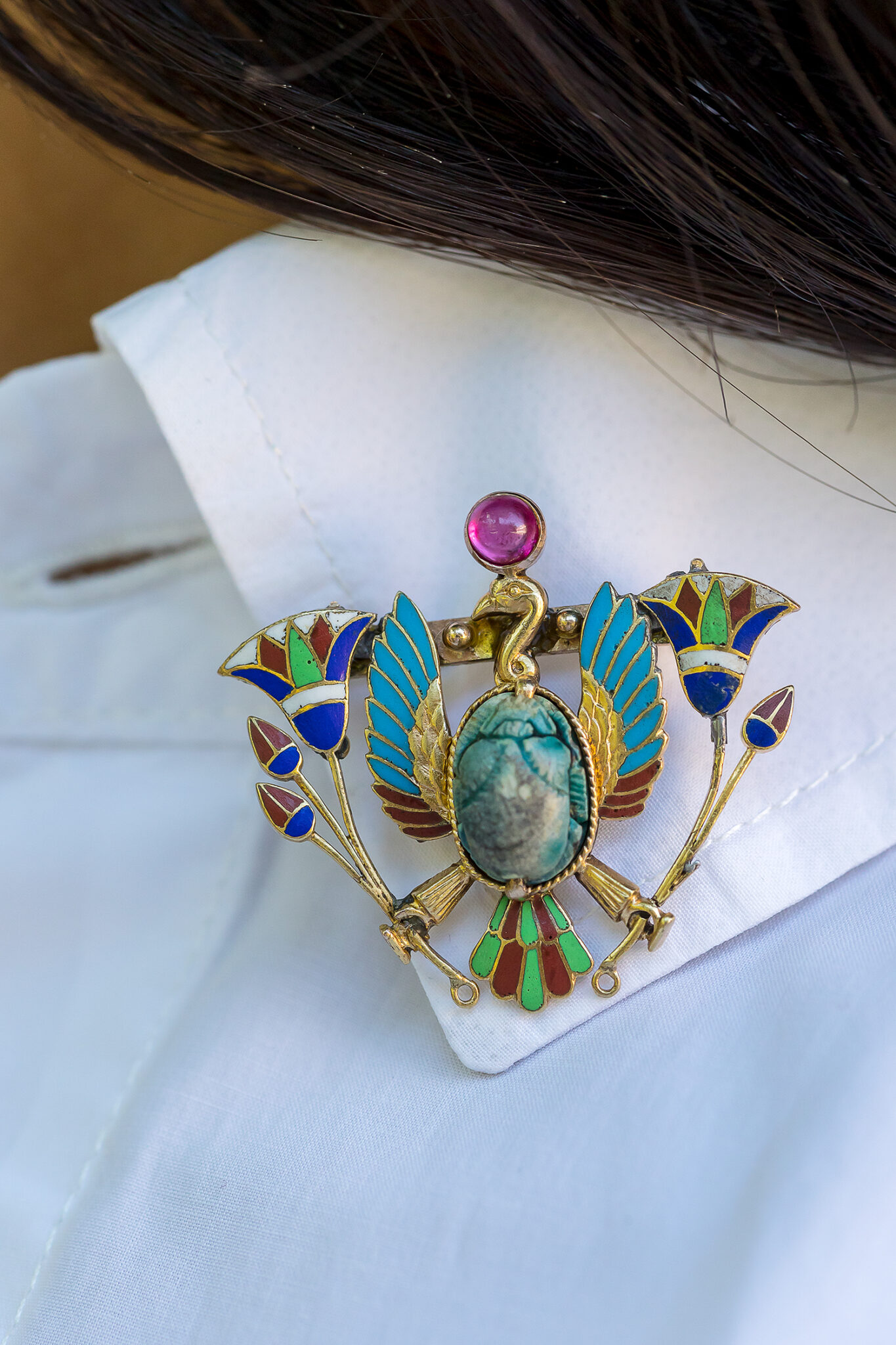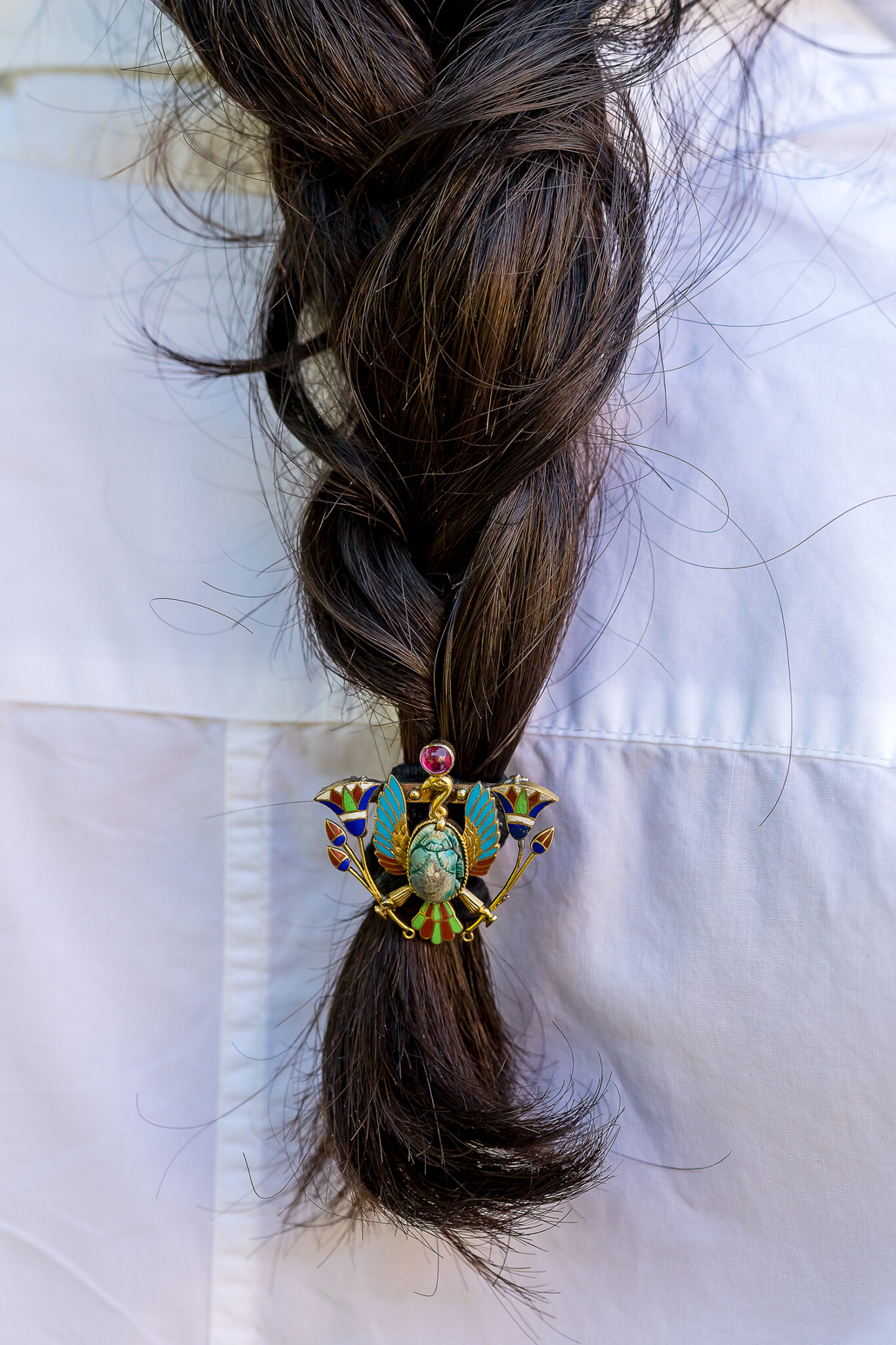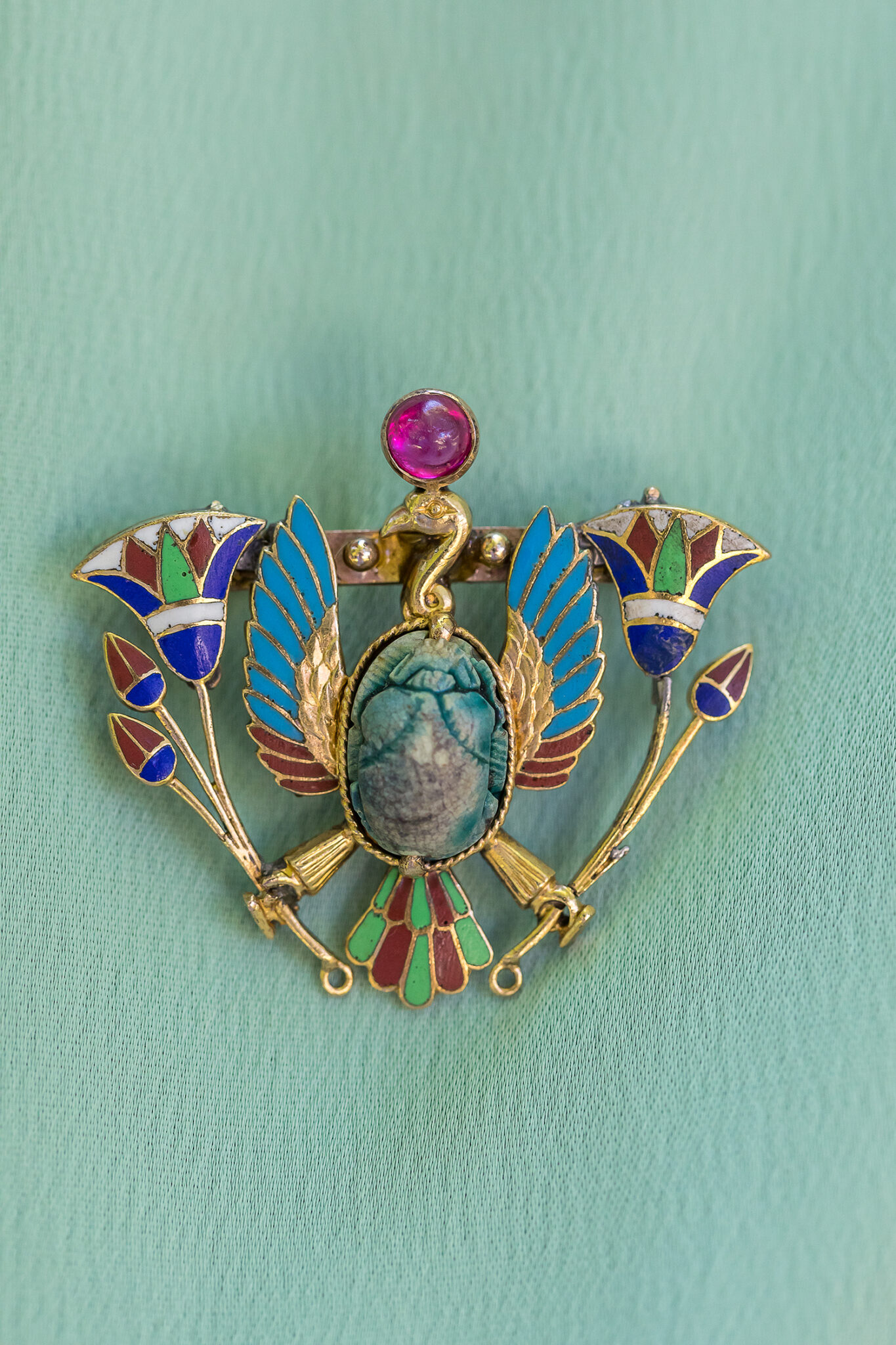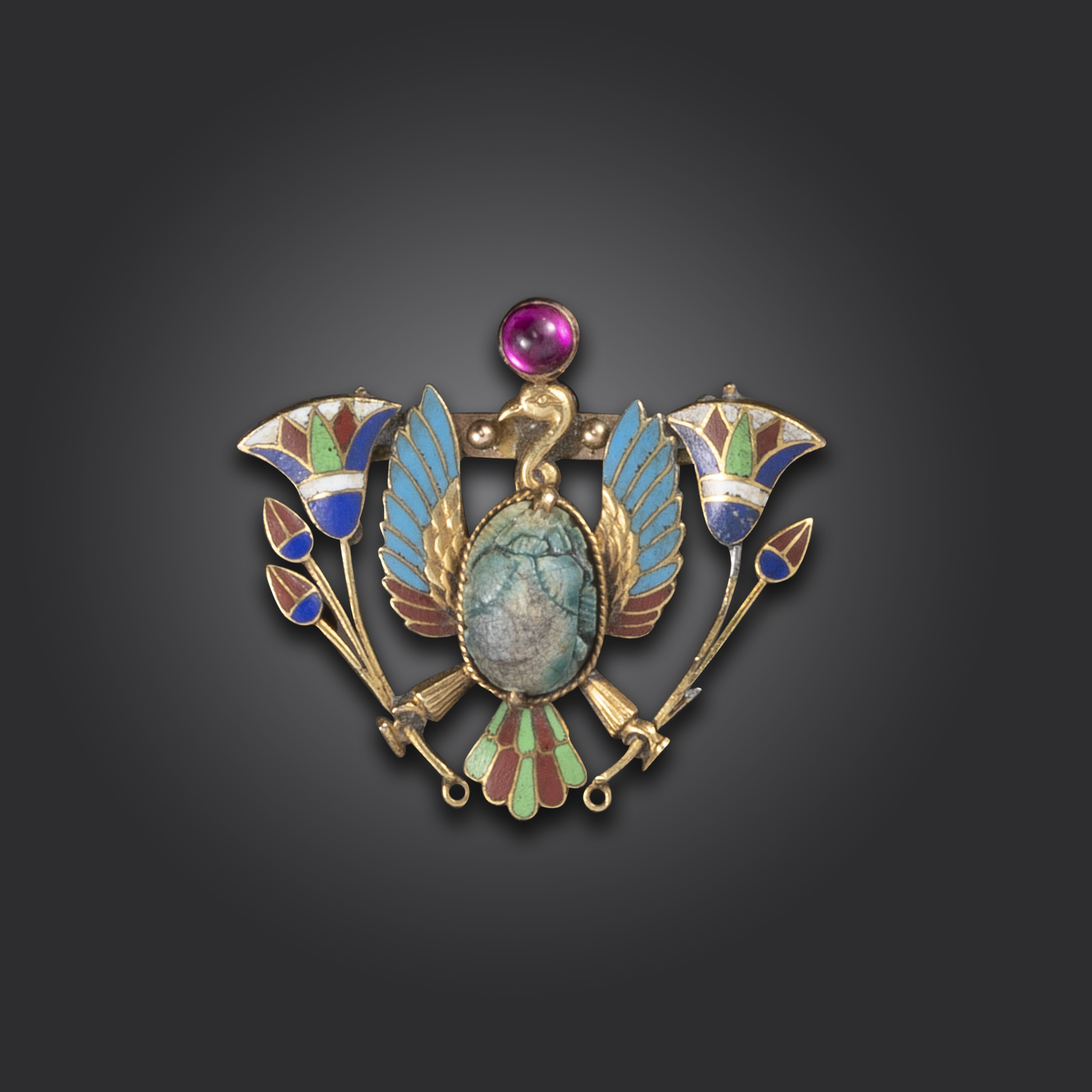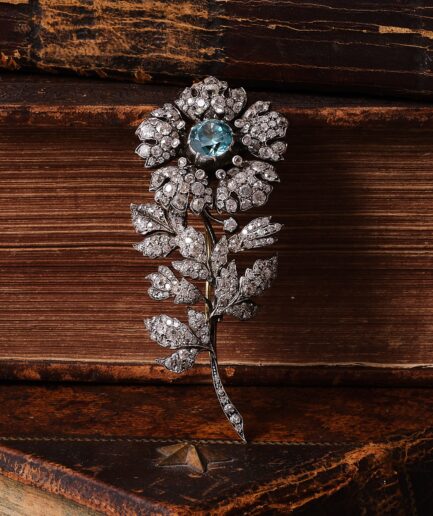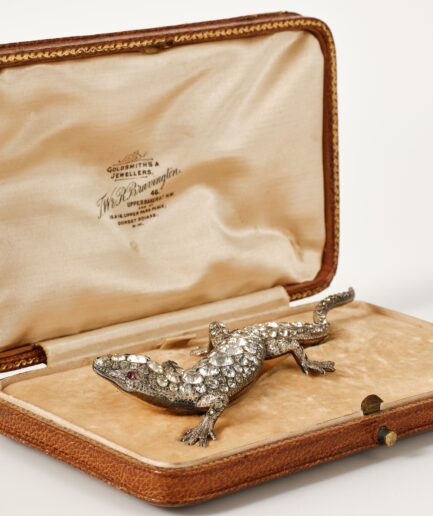An early 20th century Egyptian Revival gold brooch, depicting a vulture centred with a faïence scarab, clutching lotus pods and surmounted with a cabochon ruby, polychrome enamel decoration overall and engraved to reverse, 3.5cm wide. One arrow missing.
Revival is always happening in the jewelry world.
The Indiana Jones inside all of us is always enticed by the buried loot of the ancients. It’s one of the reasons Egyptian Revival jewelry is so alluring.
Luckily for jewelry connoisseurs the span of history that have laid way to an aesthetic resurgence and intense interest in all things Egyptian during the last two hundred years.
Napoleon’s Egyptian campaign in 1798 ignited the West’s fascination with motifs we have all come to associate with Egyptian Revival—sphinxes, pyramids, palmettes, papyrus leaves. This curiosity was further stimulated by the excitement surrounding the completion of the Suez Canal in 1869, after 10 years of construction, arousing a real revival of the Egyptian style, with jewelers specifically incorporating artifacts that were thousands of years old, faience in the shapes of falcons and scarabs, set into jewels framed by vermilion enamel and lapis lazuli.
Some of the highlights in the 19th century timeline of Egyptomania include the opening of the Suez Canal in 1869, displays at World’s Fairs and the moment when Cleopatra’s Needle was erected in Central Park in 1881. The most famous 20th century Egyptian discovery occurred in 1922 when Howard Carter and his team unearthed the tomb of King Tutankhamen. Featuring hieroglyphics, scarabs, reeds and lotus flowers it inspired Tiffany, Cartier, and Van Cleef & Arpels among others to make Egyptian style designs.
In the imaginary world of the ancient Egyptians, the winged scarab represented the sun god Khepri and symbolized resurrection and immortality. Scarabs were worn as a talisman to protect humans from evil spirits, and these winged scarabs were placed on the chests of the dead, over their hearts and always face upwards, to serve as protection during the afterlife.


